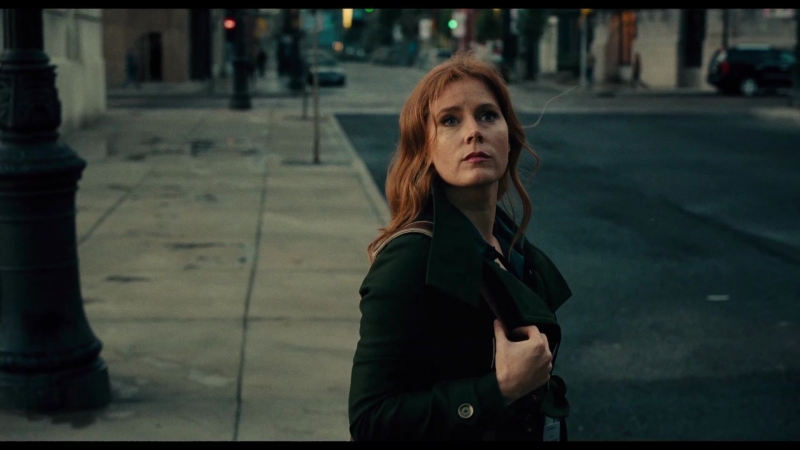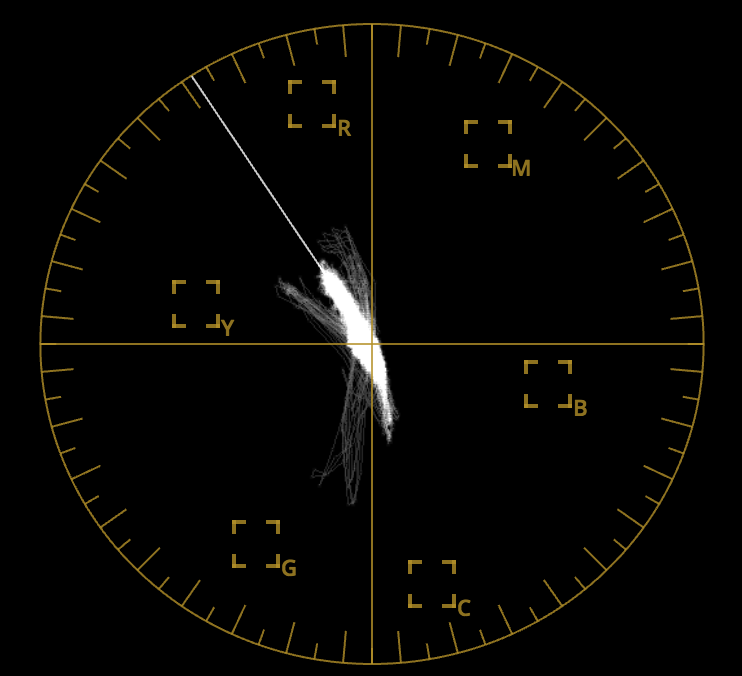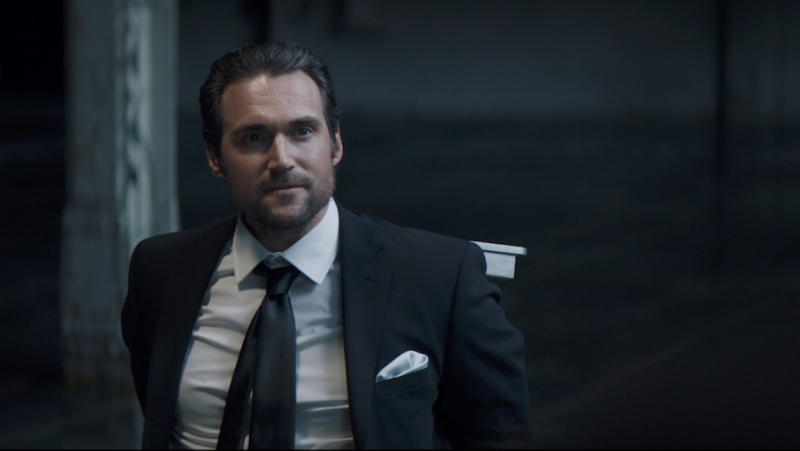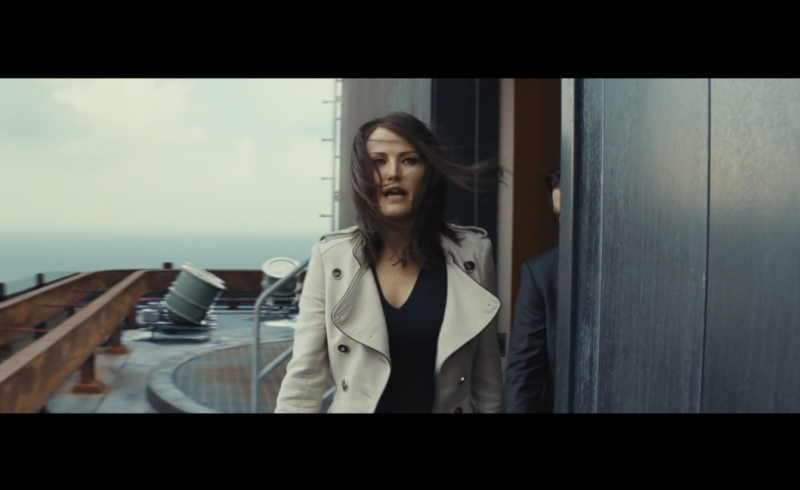-
Posts
67 -
Joined
-
Last visited
Content Type
Profiles
Case studies - Free
Case studies - Premium
Resources
Insider
Courses
Forums
Store
Posts posted by Adéyẹmi
-
-
1 hour ago, Thomas Singh said:
In Dacinci Resolve I have divided a sequence into many single clips with the scene cut detection. Unfortunately, when I started to work on the clips on the timeline I realized that I made too many clips. Is it a way to merge the clips together again?
cmd \ or alt \ These two are for split and combine. This can be done within the colour page. Simply select the two clips or more which u r tryna combine.
-
Hi guys, I can't seem to set my davinci timeline to 4k and get a proper picture on the CG248, the picture blows out of proportion. Unless I leave it at HD. Am I missing something here? Do I need to acquire the 4k ultra studio. I am currently using the ultrastudio studio. My computer is a 5k imac with retina display.
-
Is it just me? Why is there always green latching onto skin tones after a colour balance, and when you try to take it out it becomes too or quite red or magenta. Any prevention ideas, apart from creating a key, because it's not practical all the time. Any professional approach, or required mode of operation while approaching an image. Thanks for the education in advance.
-
On 8/21/2018 at 10:40 AM, Margus Voll said:
I had the same feeling for a long time now but did not have anything to prove my feel about it. This one illustrates it well.
I figured it while testing same shot in different systems.How different are these results to each other in your own opinion, kindly expantiate.
-
On 8/27/2018 at 3:31 PM, Nicolas Hanson said:
Do you know it's possible to disable all the nodes in the timeline without doing it manually on every clip? Need this to render a clean version.
shift D
-
On 6/14/2017 at 8:32 PM, Peter said:
I'd be interested to know that too. If you take the attached reference clip and look at it on the vector scope, he get a very narrow scope which seems desaturated because the colours seem to compressed but image feels so rich. Is he desaturating the image first then saturating specific narrow Hues? Am I making sense in what I'm trying to say? Also, when you say he keeps it simple with few nodes, is he doing multiple corrections within a node? Eg, log tools, hue vs hue, hue vs sat etc. Has Stefan or any of the other guys at CO3 (like you Tom) considered making a Masterclass on grading?
Probably, his zoom settings for his scope is different from yours.
-
3 hours ago, Emily Haine said:
The workaround is to click on the track number (v1, v2...) or copy the clips to a new timeline. This is an annoying bug that's been around for a long time now.
Is this on Davinci 15?
-
2 hours ago, cameronrad said:
Meh.
The only validation I need is knowing that the people paying me like my work. DPs, Editors, Directors, Cinematographers, etc all know what credit to look for and where to look. I don't think it's that big of a deal. The whole process is collaborative and I'd rather focus on gaining respect amongst my peers and industry colleagues, rather than where my name lists in the credits
Fair enough.
-
On 8/16/2018 at 1:07 AM, Anton Meleshkevich said:
Color Space Transform OFX works differently in Resolve 14 and Resolve 15. Is it normal?
Load some alexa footage with colorchecker. Add Color Space Transform OFX. Set input to alexa and output to rec709. Set luminance mapping and saturation mapping.
Everything is ok. But looks a little bit different in resolve 14 vs resolve 15.
In Resolve 15 add serial node before the OFX. Add gain until blue square in colorchecker become clipped and saturated blue.
Do the same in Resolve 14. blue square becomes just lighter (as arri lut does), but not crazy saturated blue as in Resolve 15.
Is it a bug of Resolve 15?I really don't think you should be worried about that my guy. As long as it looks good move on with your happy grading. I doubt you h'd be delivering a 14 and 15 export for your client.

-
Ladies and gentlemen, what is your take on the industries reason for not making attempt to honour and furthering the public awareness of the colourist? Doesn't it seem unusual to be credited after the "paint buyer" and "catering". In my opinion, I believe the colourists credit should be placed right after the DOP's or editor's. Any comments on this?
-
2 minutes ago, Thomas Singh said:
In this case I don't think you would want a credit. Colorists get blamed for bad footage. If the skin looks bad, you haven't done a good enough job. Stay away.
Lol, very true. I have worked with some very empathic individuals who don't get fussy at all, because they clearly understand how bad their footage is. The point for some is, okay.. just make it look better, and add some style to it. But for many... Yea my footage is crap, fix it!
-
 1
1
-
-
1 hour ago, Nicolas Hanson said:
Why would you need make-up artists or gaffers on set if you could fix makeup and relight the set in post? If the scene is lit poorly and the make-up is bad you should tell them to put some more money into production next time. I hate the word budget, and especially when problems are routed to post. To be nice, I would probably not give them the speach but let them know that skin replacement is a job for the VFX department and that colorists mainly handle colors. You could reduce some midtone details, draw the attention elsewhere in the shot or try to use color smart ways, but nothing can beat bad make-up. The OFX beauty mask could be worth a try as well.
Toxic clients eh. And the reference I was given is as golden as Mad max, but she also complains at how orangy she looks, compared to real life where she is super pale. How do I keep natural skin tones with a mad max look, and still fix bad makeup to blend in. I tell her that she has to compromise but that gets her upset. And then she says she wants the colours to pop! Lighting was extremely bad, makeup was bad, footage was shot on H.264. Cancelling her contract!
And when we even do get credits, it comes after catering.
-
I quite often get hired to colour low budget music videos, and I also quite often come across footage that has amateurish make up done on the talent(s), where I discover patches of face powder on both the talent's hands and face, but mostly the face. What I would like to know is - is there a correct way to fix this? Is there something I need to learn or it's something that has to be accepted for what is.
Thanks.
-
21 hours ago, Margus Voll said:
On set camera work also affects it a lot as contrast ratios are set by good dop in camera already and you just have control over it n post to adjust harder or softer.
It really will depend on story and shots before and after plus on set in camera. Many variables to take in consideration not just gamma.One more question Sir, what is the approach to mastering for different formats? Say, I have been asked to work on a feature thats gonna make its way to the cinema's and DVD? Thank . you.
-
4 hours ago, Margus Voll said:
On set camera work also affects it a lot as contrast ratios are set by good dop in camera already and you just have control over it n post to adjust harder or softer.
It really will depend on story and shots before and after plus on set in camera. Many variables to take in consideration not just gamma.Here is what I aspire to grade like: http://www.themill.com/portfolio Every image is completely soft on the shadows. How do they do it. I doubt their thousand of clients all shoot the same way.
-
15 hours ago, Amada Daro said:
You are talking about contrast management, and it's perfectly doable to create a bold (and soft) contrast without going underexposed. It requires a combination of primary tools and some experience.
Fantastic! What is your approach to it? Thanks. I know the mid-tone pays a very vital role in this approach. I spoke with Matt Osborne (The Mill) a couple of times, he said one secret is for your blacks never to reach the bottom, and he said it requires some experience as well. Here is what I aspire to grade like: http://www.themill.com/portfolio Every image is completely soft on the shadows. How do they do it. I doubt their thousand of clients all shoot the same way.
-
Hi fam, I have uploaded two files...Gamma 1 and Gamma 2. Gamma 1 seems to have very soft shadows or contrast, unlike gamma 2 which has deep blacks. I also realised that Gamma 1 tends to be more of an European trend, especially for commercials. (Softer blacks). What I would like to know is - is this soft contrast look achieved during the grade, or its a specific gamma setting applied on camera. In my opinion, I highly doubt it is achievable merely by colour grading. I find that some images however forced would never look right trying to achieve soft blacks like Gamma 1, and vice versa. I understand that lighting matters, but trying to push the shadows (Gamma 1) beyond 128mv for Davinci, would should be likely equivalent to 7 IRE on Baselight, starts to produce an underexposed image.
Warmest regards.
-
Hello guys!
If I happen to be grading for cinema deliver, am I correct to change both my Davinci software colour space setting and my scientific monitor viewing colour space to P3?
If I am grading 4k, for TV deliverables, am I correct to make the same changes, but to Rec2020?
Thanks.
-
1 hour ago, Emily Haine said:
Have you decided what to go for @Adéyẹmi?
Yes thanks, the BM210 or AM210. The AM210 which is a lower version to BM210 might not be a bad idea?
-
Flanders BM210 or EIZO CG248-4K (23.8") Which will you go for and why?
-
18 hours ago, Emily Haine said:
The monitor is excellent. Extremely good for that amount of money. It's not "recommended" by some because it doesn't come with SDI inputs, but with a cheap HDMI to SDI converter you are good to go. Happy shopping.
Hi once again Emily. Flanders BM210 or EIZO CG248-4K (23.8") Which will you go for and why?
-
30 minutes ago, Bruno Mansi said:
I'm afraid not.
I'd head over to the LiftGammaGain forums. They seem to discuss Eizo monitors quite a lot in the Monitors & Projection section.
Thanks
-
30 minutes ago, Emily Haine said:
The monitor is excellent. Extremely good for that amount of money. It's not "recommended" by some because it doesn't come with SDI inputs, but with a cheap HDMI to SDI converter you are good to go. Happy shopping.
Thanks a bunch Emily.

-
22 minutes ago, Bruno Mansi said:
Using Cmd or Ctrl \ and Option or Alt \ are just for splitting or joining a clip. If you try to take 2 or more clips that are not from the same master clip or not adjacent on the same source you'll get an error.
Compound clip or new Fusion clip is the way to go.
Makes sense. Thanks. Do you have working experience on an EIZO CG248-4K (23.8") monitor?
I am trying to find out if its worth purchasing.






Disable nodes on all clips in Davinci Resolve
in DaVinci Resolve
Of cos.